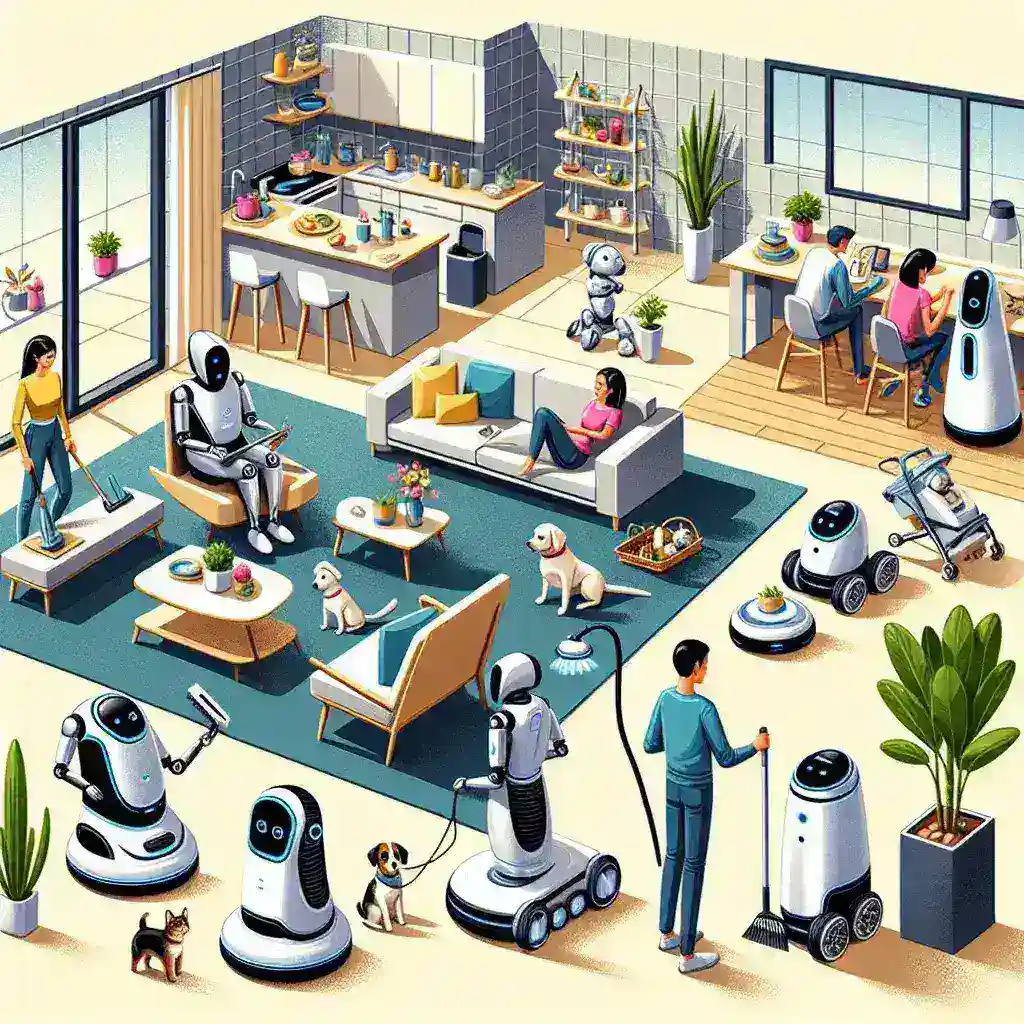Introduction
The future of domestic assistance is upon us, and it comes in the form of home assistant robots. These sophisticated machines are not just a novelty; they have achieved significant commercial success by providing practical capabilities that enhance our daily lives. In this article, we will delve into the journey of home assistant robots, their practical applications, the challenges they face, and their potential future in our homes.
The Evolution of Home Assistant Robots
Home assistant robots have come a long way since their inception. Initially designed for basic tasks, such as vacuuming and floor cleaning, these robots have evolved into multi-functional devices capable of performing a wide range of activities. The early models were often clunky and inefficient, but advancements in technology have paved the way for smarter, more efficient robots.
Historical Context
The concept of robotic assistants can be traced back to the early 20th century, with the emergence of science fiction portraying robots as helpers in domestic settings. However, it wasn’t until the late 1990s and early 2000s that the first commercial home robots, like the Roomba, hit the market. This marked the beginning of a new era where automation became accessible to the average household.
Current Capabilities of Home Assistant Robots
Modern home assistant robots are equipped with advanced features that enable them to perform various tasks, making them invaluable in today’s fast-paced lifestyle. Here are some of the primary capabilities:
- Cleaning: Robots like the Roomba and Braava have transformed how we approach household cleaning. Equipped with sensors, they can navigate homes, avoiding obstacles while efficiently vacuuming or mopping floors.
- Home Security: Some home assistant robots double as security devices, monitoring the premises and providing real-time alerts to homeowners via smartphone applications.
- Personal Assistance: Voice-activated AI assistants like Amazon’s Alexa or Google Assistant integrated into robots can help manage schedules, control smart home devices, and access information hands-free.
- Companionship: Social robots, such as the Jibo and ElliQ, have been developed to engage with users, providing companionship, entertainment, and even cognitive stimulation.
Real-World Examples
Many households have embraced home assistant robots, leading to significant commercial success. According to a recent report, the global market for home robotics is expected to exceed $35 billion by 2027. Companies like iRobot and Ecovacs have seen substantial growth due to their innovative products that cater to the needs of modern families.
The Commercial Success of Home Assistant Robots
The surge in popularity of home assistant robots can be attributed to several factors:
1. Increased Demand for Automation
As life becomes busier, many people are looking for ways to automate mundane tasks. Home assistant robots provide a solution that allows users to focus on more important responsibilities while ensuring their homes remain clean and organized.
2. Technological Advancements
Improvements in artificial intelligence, machine learning, and robotics have made these devices smarter and more efficient. Enhanced navigation systems, improved battery life, and better cleaning algorithms have all contributed to their success.
3. Integration with Smart Home Ecosystems
As smart home devices become more prevalent, the integration of home assistant robots into these ecosystems has further increased their appeal. Users can control their robots alongside other smart devices, creating a seamless living environment.
4. Marketing and Consumer Awareness
Effective marketing strategies have played a vital role in raising awareness about the benefits of home assistant robots. Companies have focused on highlighting their practical capabilities through engaging advertisements and informative content.
Challenges Facing Home Assistant Robots
Despite their success, home assistant robots are not without challenges. Some of the key issues include:
1. High Initial Costs
The initial cost of purchasing home assistant robots can be prohibitive for some consumers. While prices have decreased over the years, high-end models still come with a significant price tag.
2. Privacy Concerns
As with any technology that collects data, privacy concerns are prominent. Users worry about how their data is used and whether their interactions with home assistant robots are secure.
3. Limitations in Understanding Context
Although home assistant robots have advanced capabilities, they still struggle with understanding context and nuances in human communication, which can lead to misunderstandings during interactions.
The Future of Home Assistant Robots
The future of home assistant robots is bright and full of possibilities. Here are some trends and predictions for the coming years:
1. Enhanced AI Capabilities
As artificial intelligence continues to evolve, we can expect robots to become even smarter, with improved natural language processing and adaptive learning capabilities. This will enable them to provide more personalized assistance and engage in meaningful conversations.
2. Specialized Robots for Different Tasks
The market may see a rise in specialized home assistant robots designed for specific tasks, such as meal preparation, gardening, or childcare. This specialization could enhance efficiency and effectiveness in household management.
3. Greater Integration with IoT Devices
As the Internet of Things (IoT) expands, home assistant robots will increasingly integrate with other smart home devices, creating a more interconnected and automated living environment.
4. Increased Focus on Sustainability
With growing concerns about environmental issues, future home assistant robots may focus on sustainable practices, using eco-friendly materials and energy-efficient technologies.
Conclusion
Home assistant robots have come a long way, achieving remarkable commercial success through their practical capabilities. As technology continues to advance, these robots will likely become even more integral to our daily lives, offering assistance, companionship, and efficiency. While challenges remain, the future is bright for home assistant robots, promising a new era of automated living that enhances our quality of life.



Leave a Reply